Damascus – Roman Ruins دمشق – الآثار الرومانية
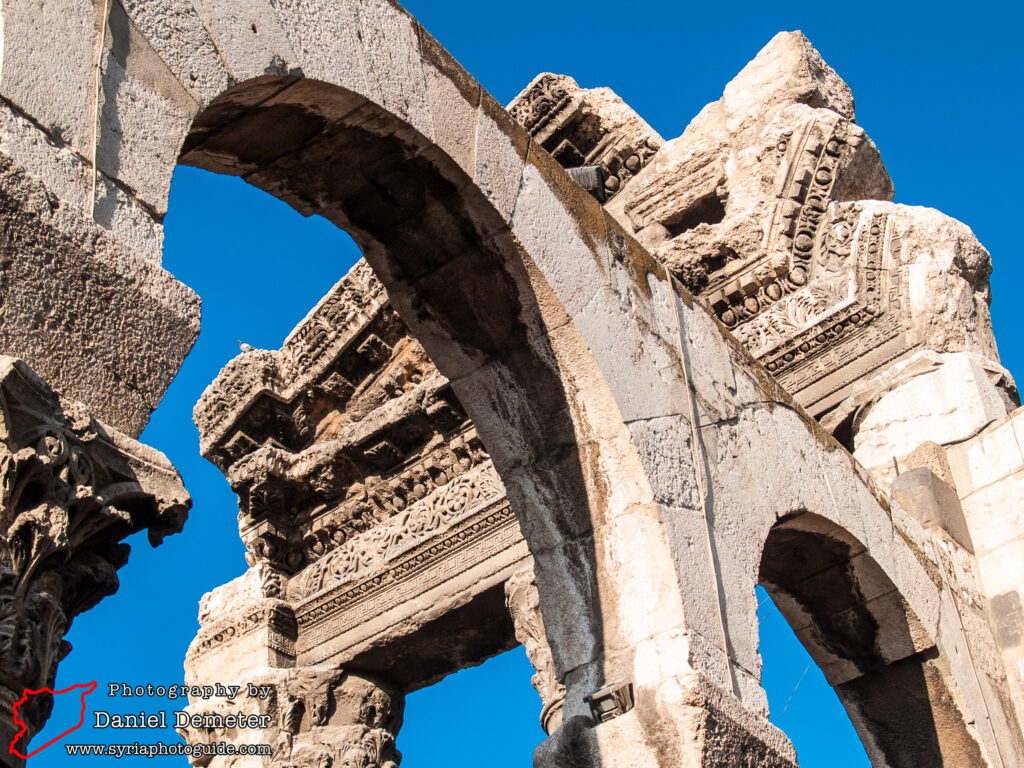
Damascus (دمشق) was conquered by the Romans in 64 BCE, which marked the beginning of their long rule over the city. Although the Romans based their administration of Syria in Antioch (modern Antakya, Turkey), there were several substantial building projects undertaken in Damascus (دمشق) during the centuries of Roman rule. These included improvements in city planning, construction of an aqueduct system to bring water from the Barada River into the city, and the conversion of the Hellenistic Temple of Zeus (which was earlier dedicated to the Semitic Hadad) into the Roman Temple of Jupiter. While only sparse remains from the Roman period survive today, these fragments can be found throughout the old city, providing several reminders of the city’s rich history.
Perhaps the most interesting of these remains relate to the former Temple of Jupiter, now the Umayyad Mosque (الجامع الاموي). The temple complex was redeveloped on an extravagant scale in the first century. Local architect Apollodorus was responsible for the project, and he greatly expanded the temple while maintaining much of the original design. The temple featured a large courtyard with a centralized cella and an image of Jupiter. There was a tower at each of the courtyard’s four corners, used for Semitic rituals where sacrifices were performed at high places. The temple was later restored and redecorated under the rule of Septimius Severus (193-211 CE). At this time the complex, with its extensive outer walls, was significantly larger than the present day mosque and was the largest temple in Roman Syria.
To the west of the present day Umayyad Mosque (الجامع الاموي) are the remains of the propylaeum, or monumental gateway, to the Temple of Jupiter. Only the southern segment of this richly decorated façade survives, originally a large semi-circular arch framed by a triangular entablature. It was supported on six columns nearly twelve meters high and topped by Corinthian capitals. Also of Roman origin are the foundations of the mosque’s exterior walls. Incorporated into the southern exterior wall of the mosque are the remains of the temple’s southern entrance, obstructed when the prayer hall was rearranged to be oriented towards Mecca. The elaborately carved lintel of this entryway survives, with a Greek inscription from the Byzantine period. The main entrance to the temple during the Roman period was on the eastern side, but little of that gateway remains. Further east, however, are some remains of the outer walls of the complex. Other remains of these outer walls can be found just west of Madrasa Abdullah al-Azem (مدرسة عبداللة العظم).
Straight Street (الشارع المستقيم) was the most important thoroughfare during the Roman period, during which time it was twenty-six meters wide. Much has changed since then, with the present day street significantly more narrow as it has gradually been encroached upon over the centuries. Some Roman remains can be found in the vicinity, perhaps most notably the partially reconstructed Roman arch just east of the old city’s center. This arch stood on the decumanus at the intersection of a major cross street, the cardo maximus. Over the centuries, the arch had become buried below street level. It was excavated and restored during the French Mandate. It is estimated to have been constructed in the late second century and may have been part of a tetrakionion. Further east, and covered separately, the old city gate of Bab Sharqi (باب شرقي) retains much of its original Roman-era design. Known as the “Gate of the Sun” to the Romans, it features a triple arched entrance: a large central passageway for wheeled carriages, and two smaller side passageways for pedestrians. It is believed that the gate was originally constructed in the first century during the reign of Augustus, then rebuilt under Septimius Severus or Caracalla in the late second or early third century. West of the old city are sparse remains of the original Roman aqueduct.
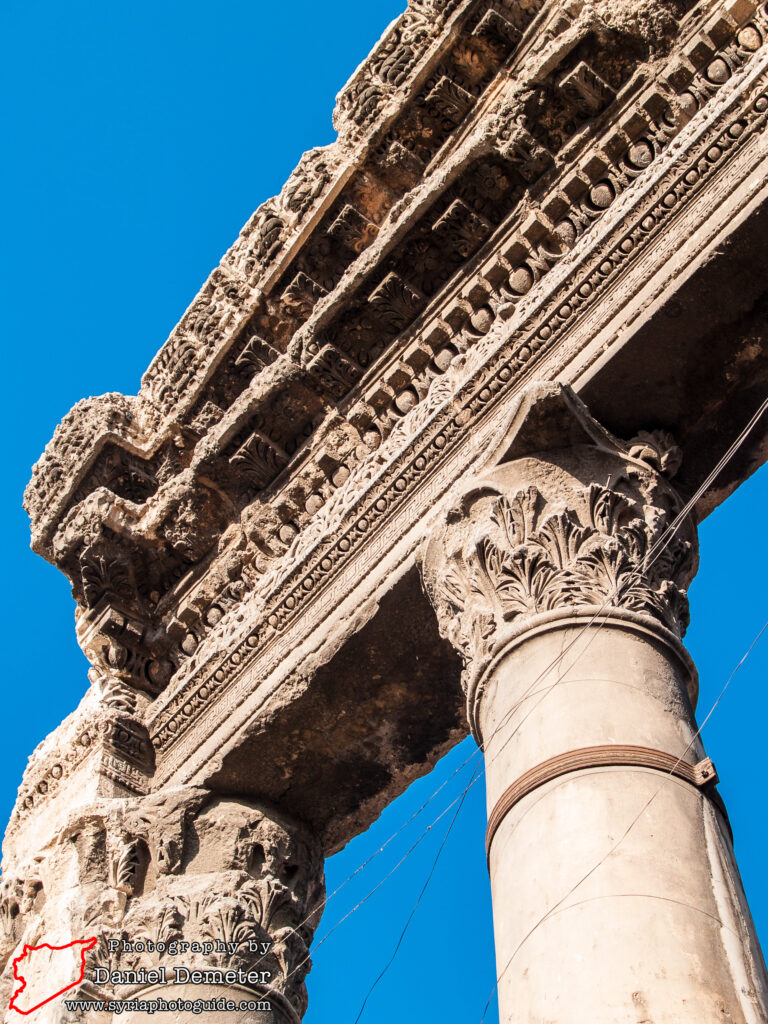

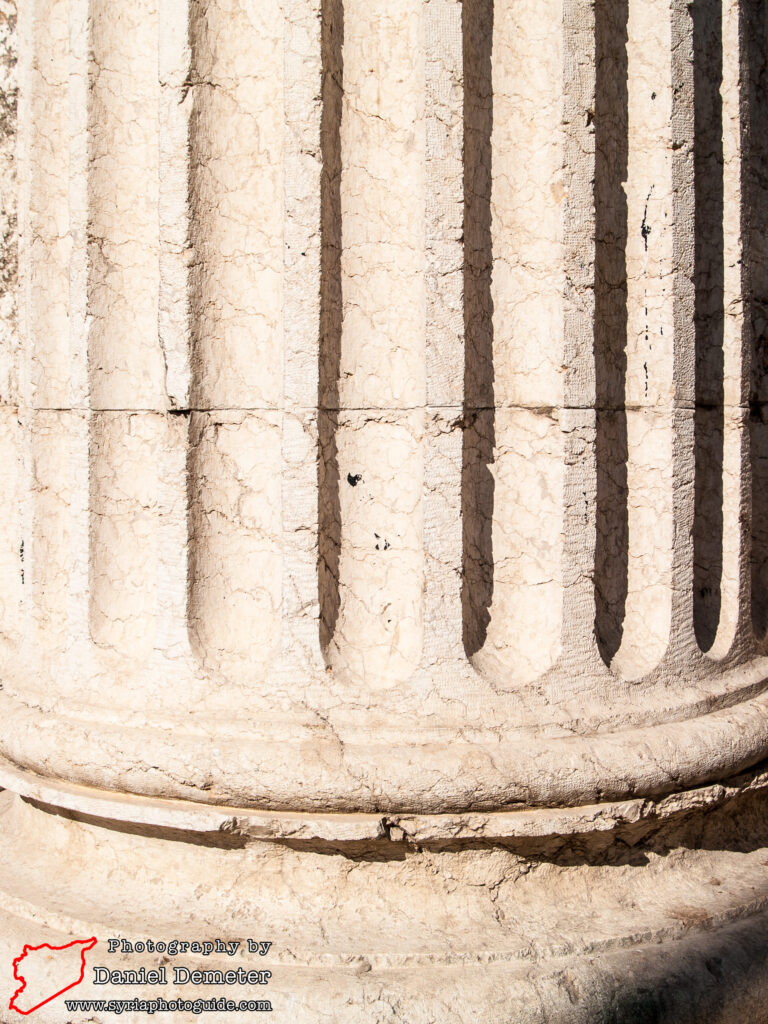
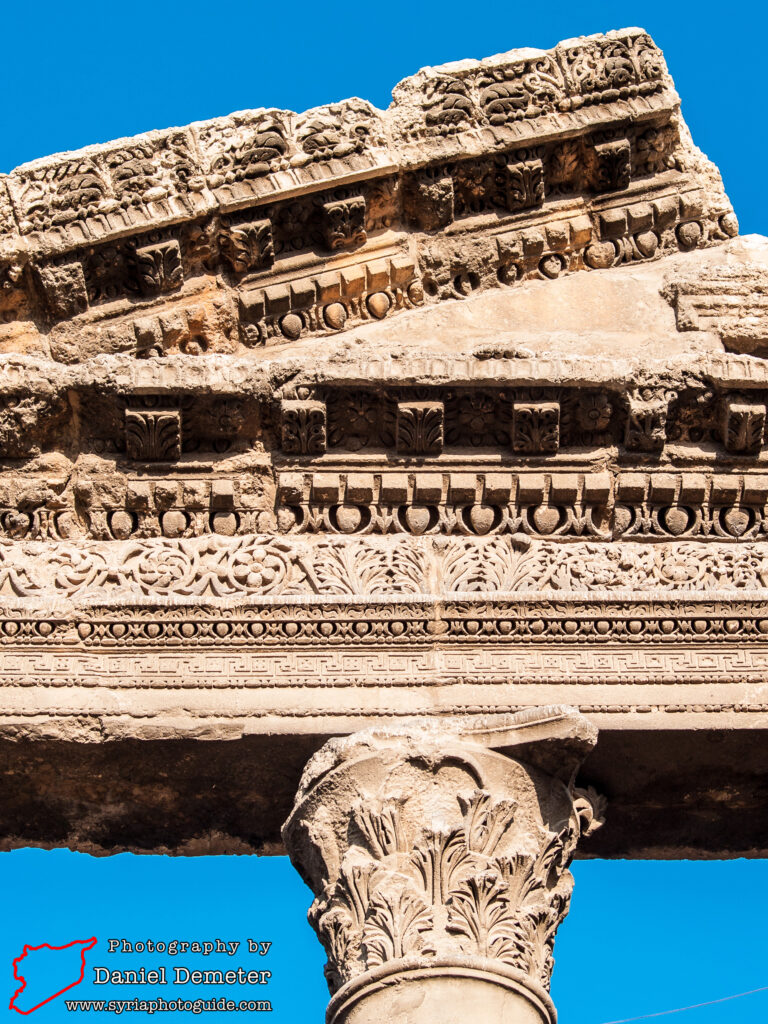
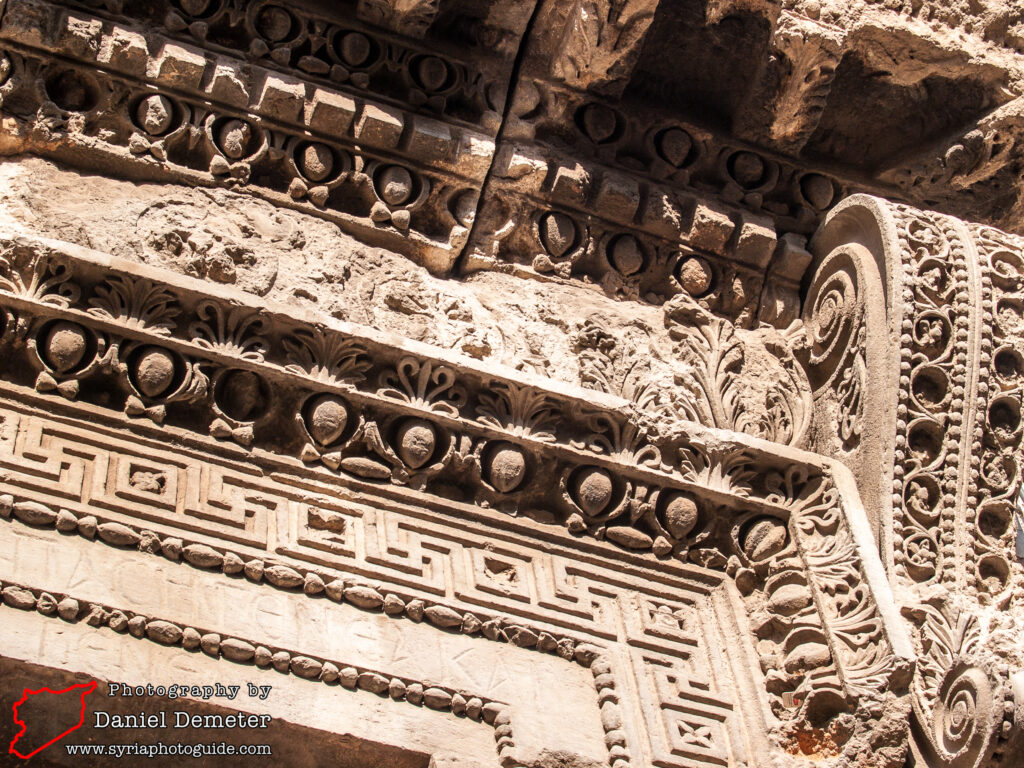
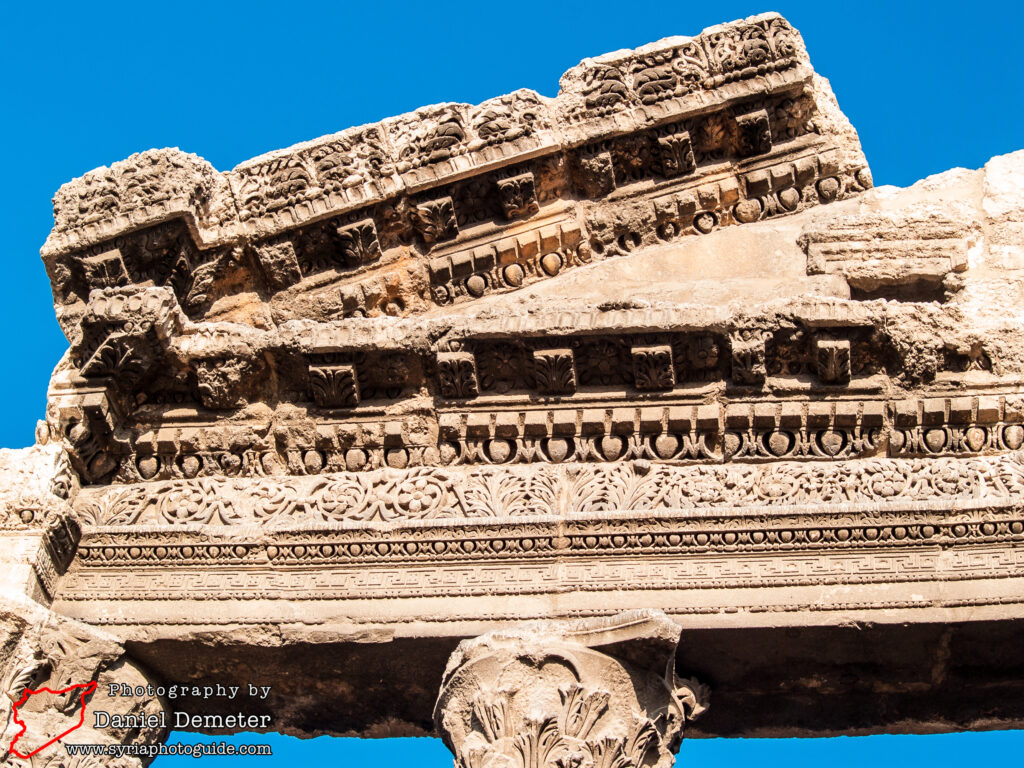
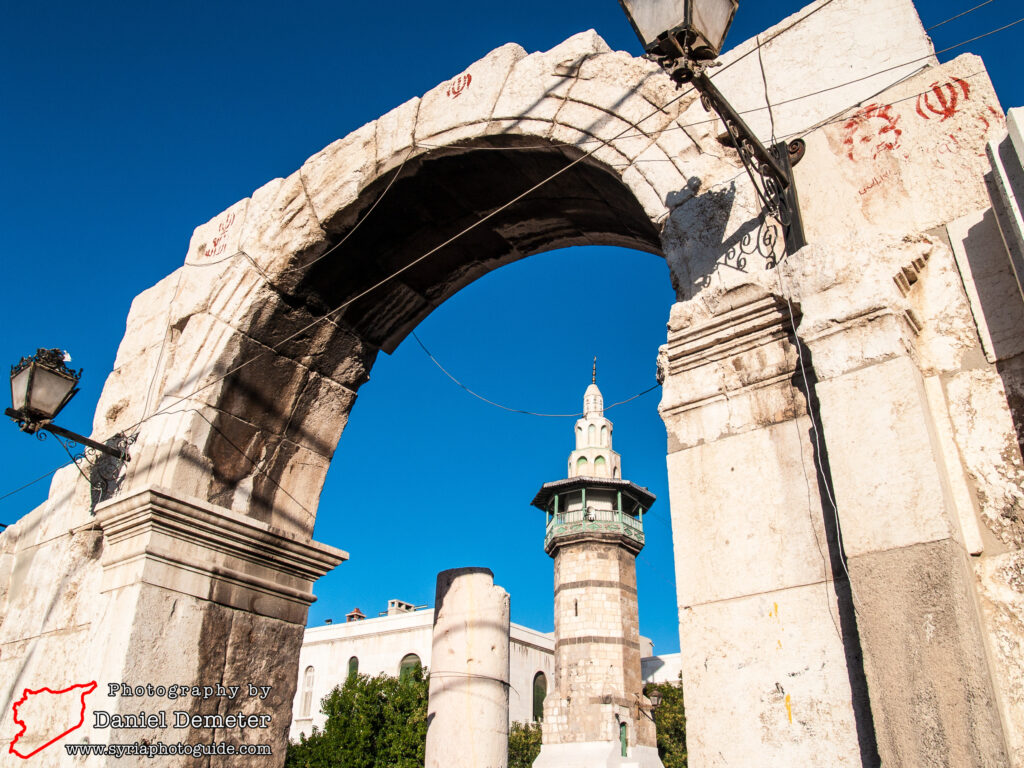
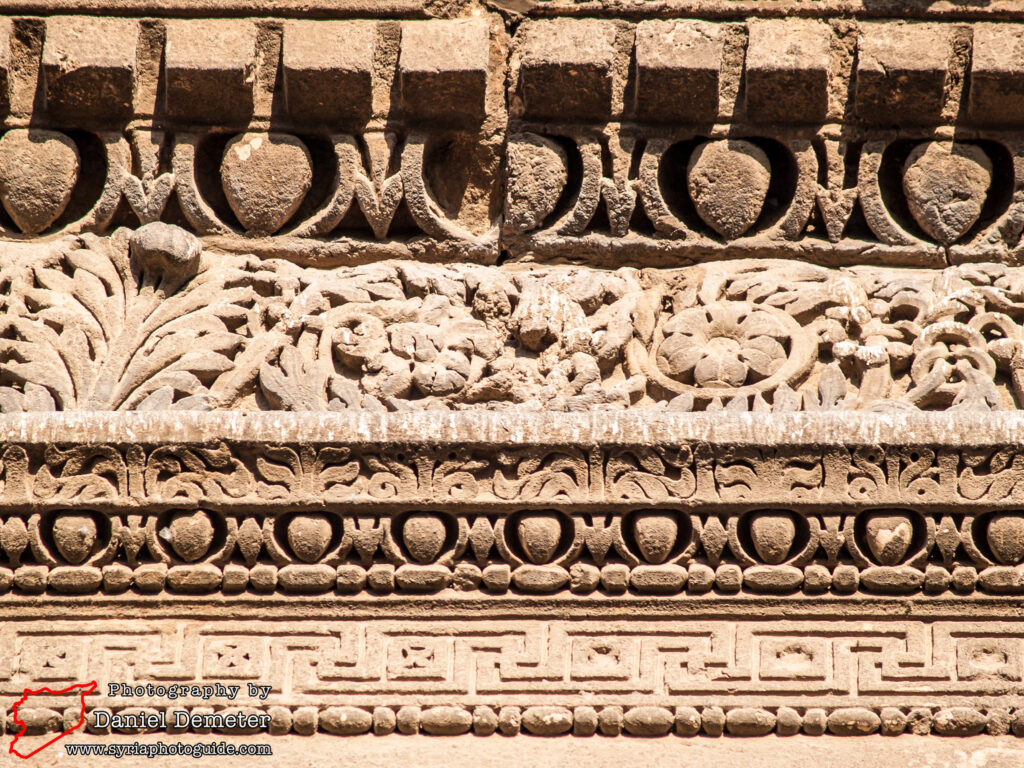
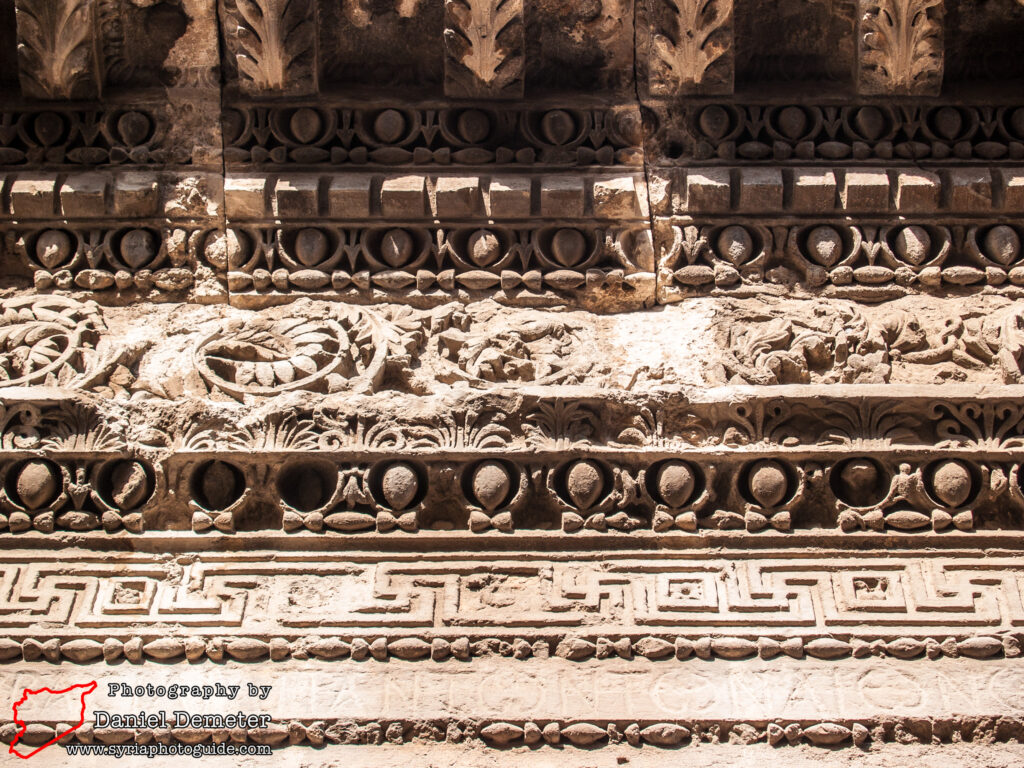
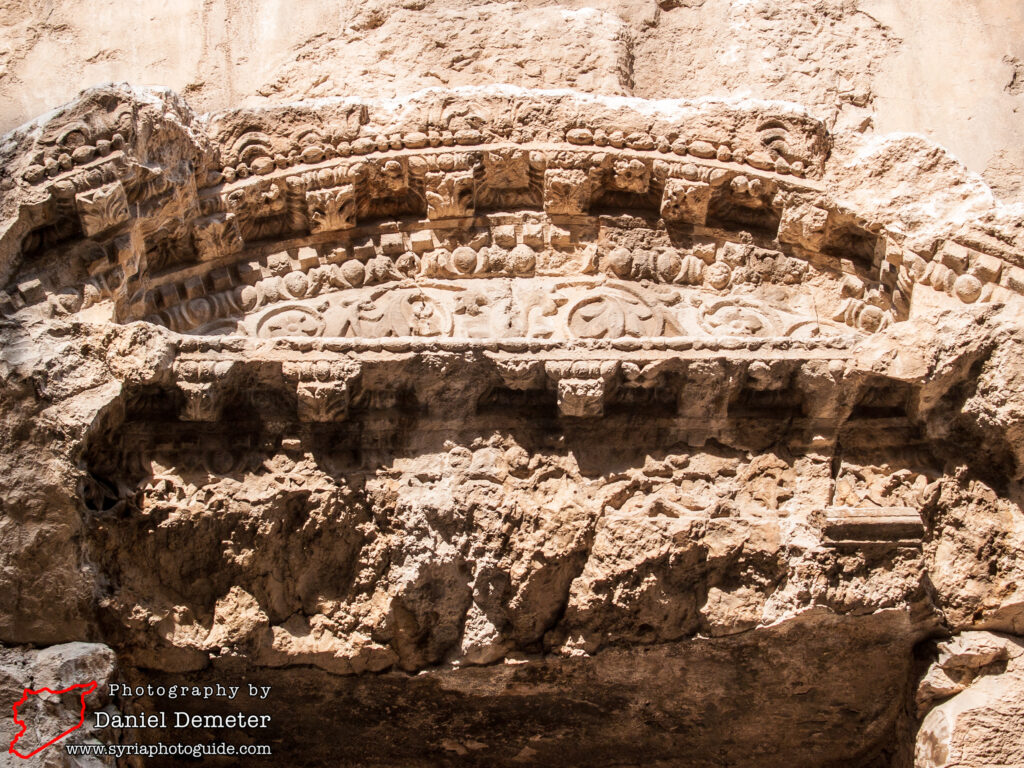
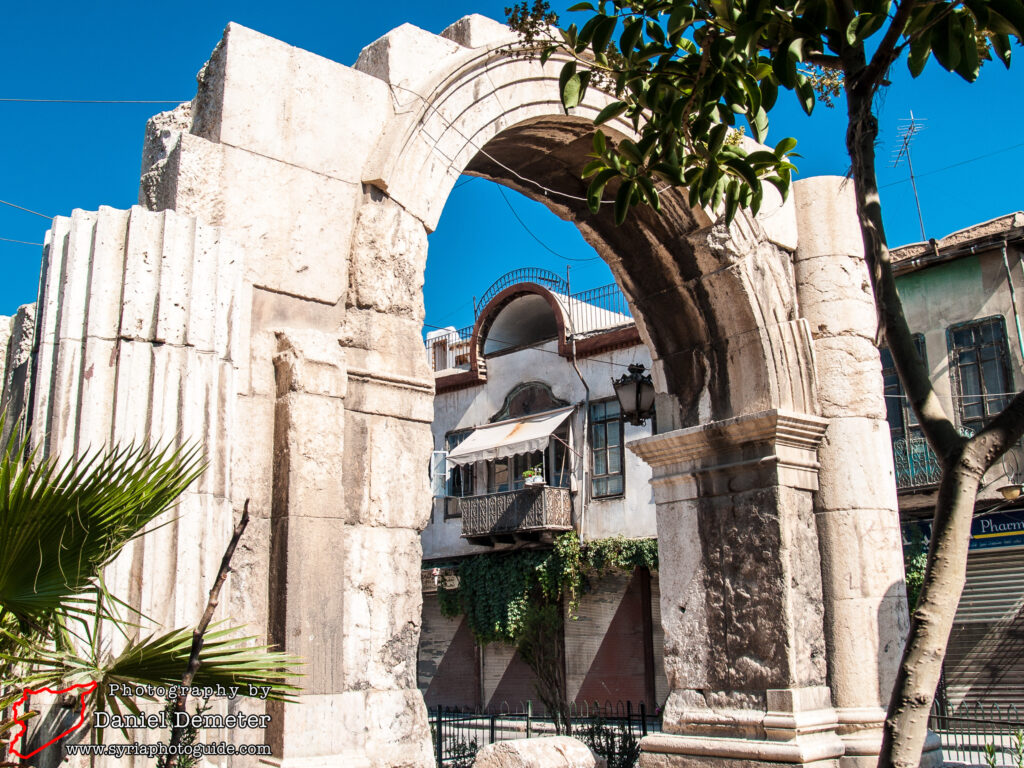
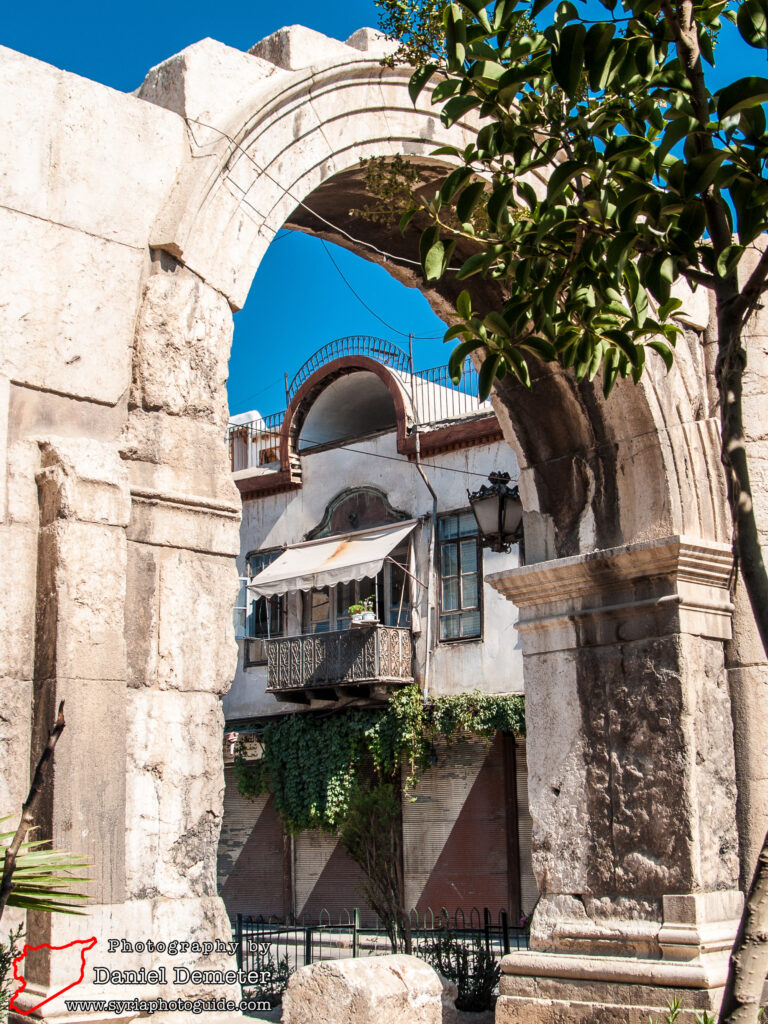
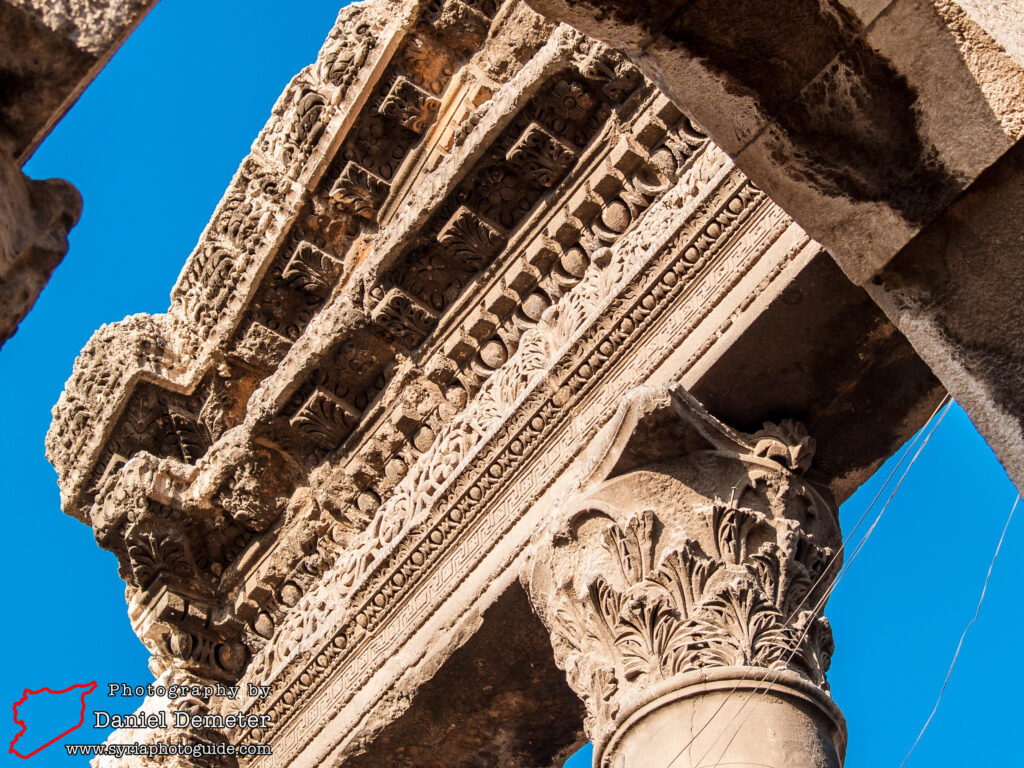
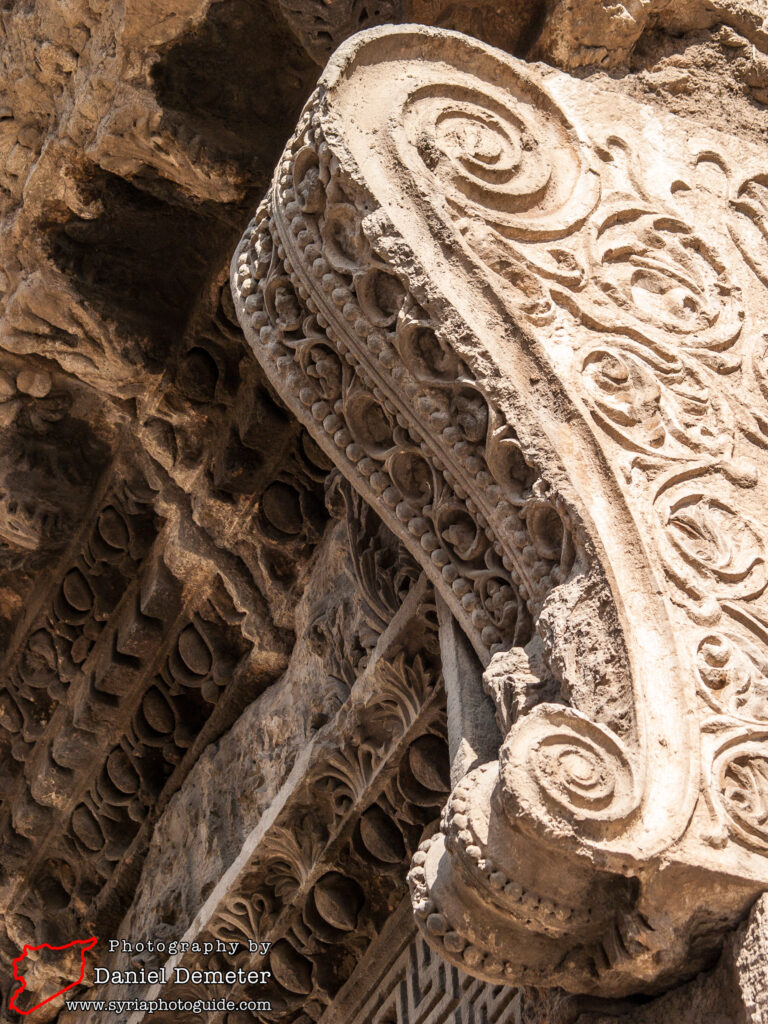
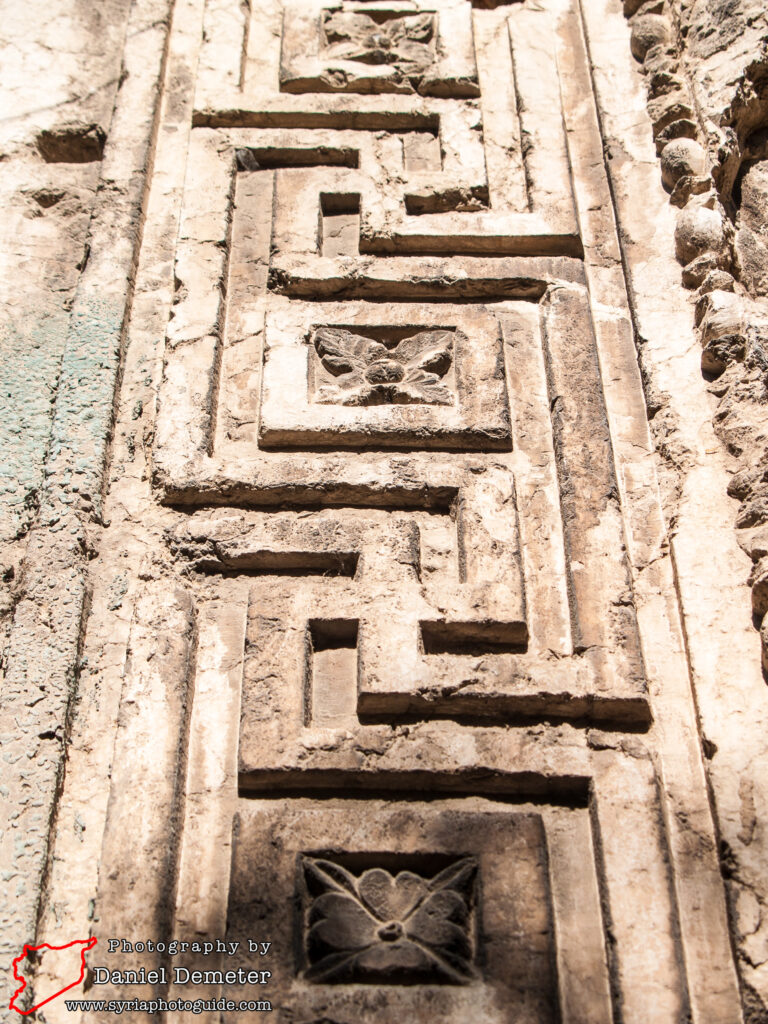
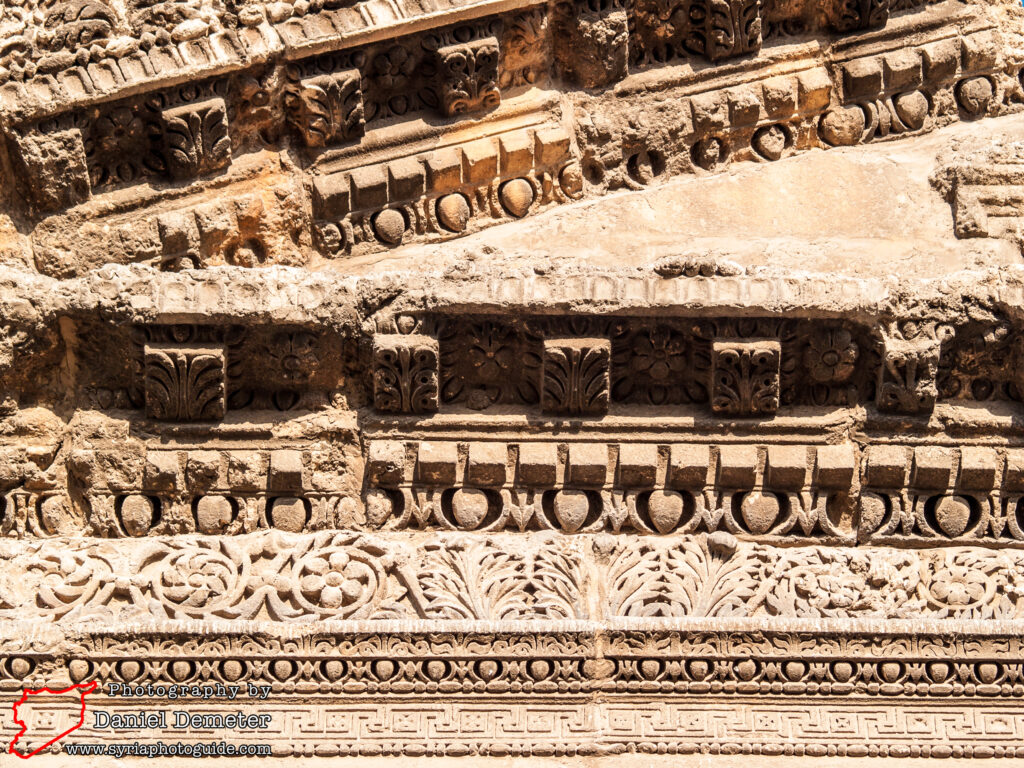
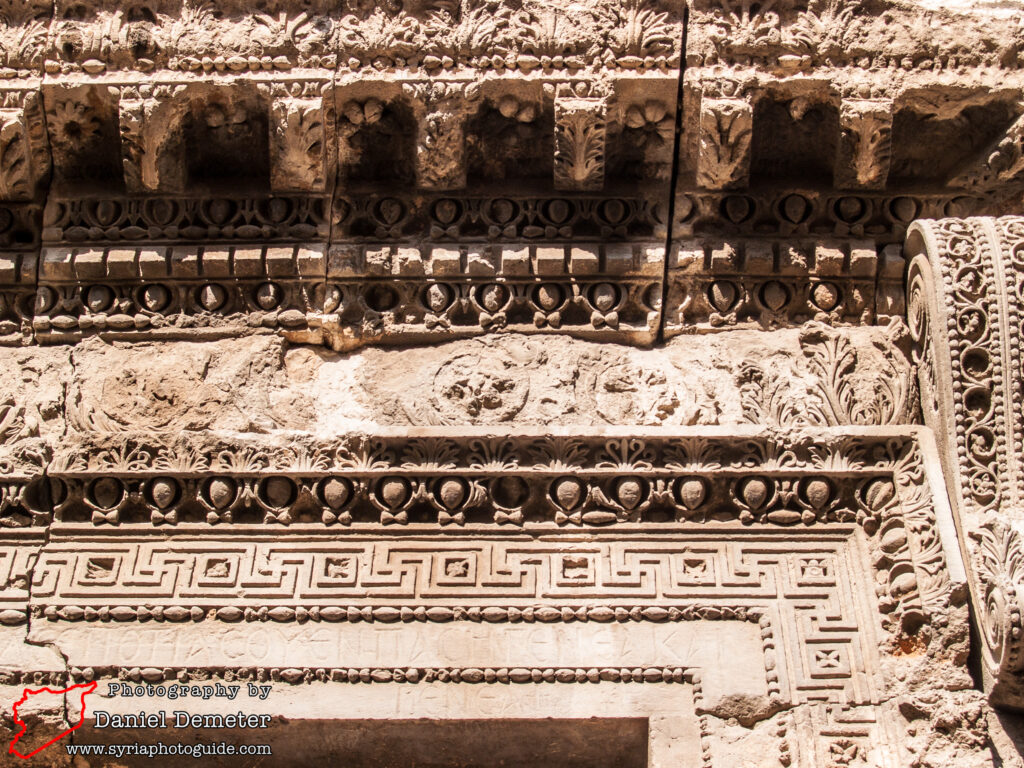
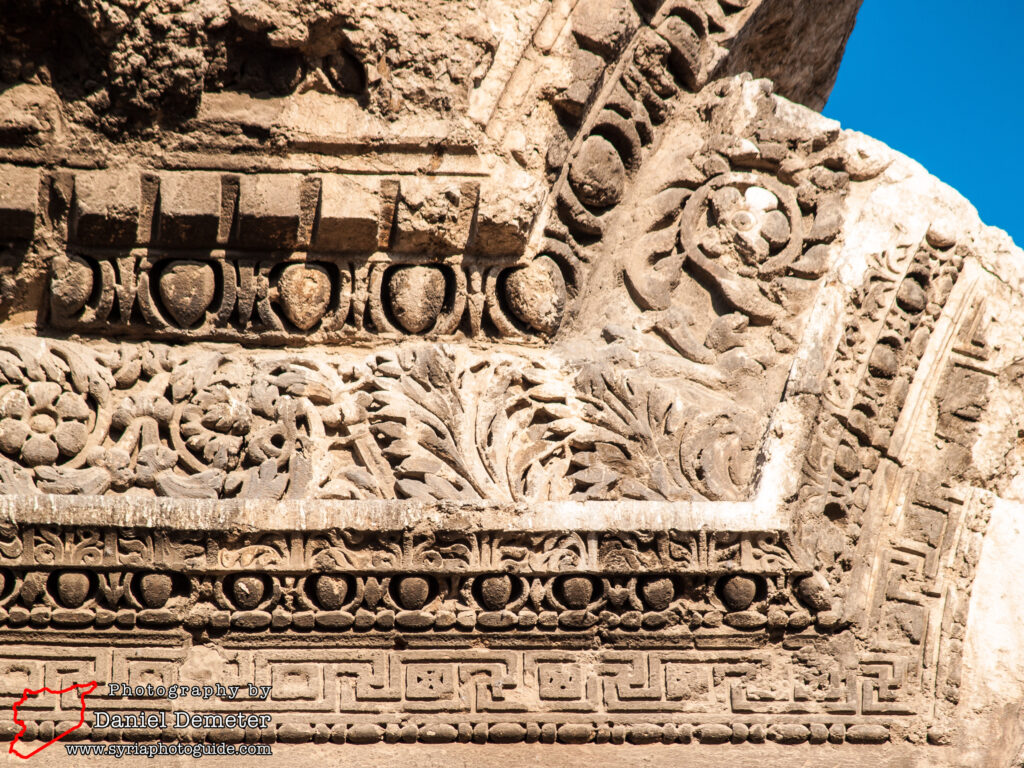
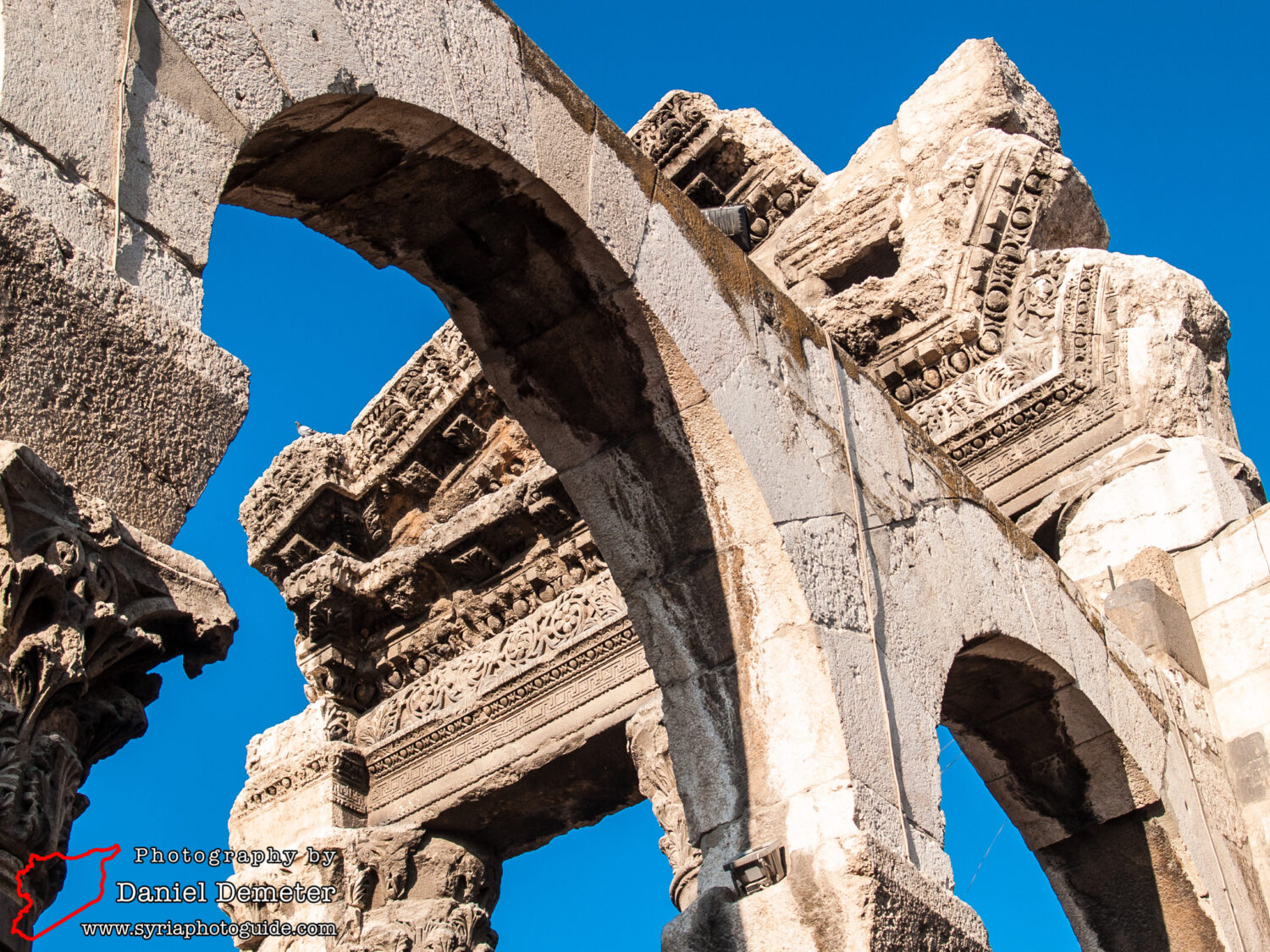
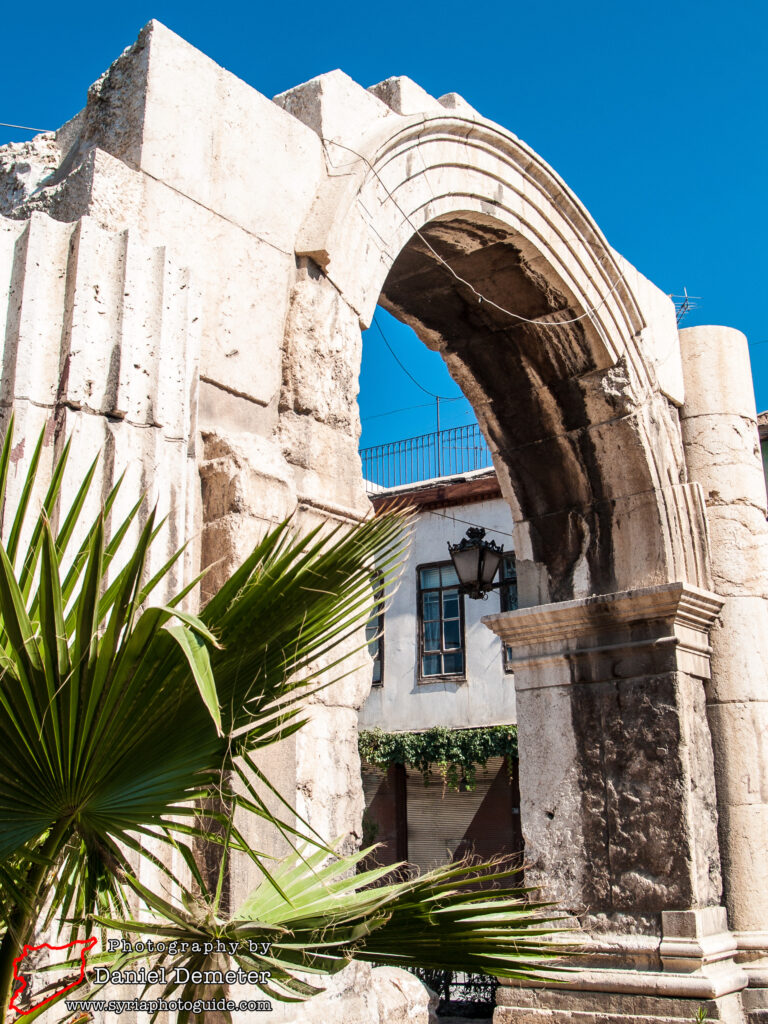
Getting There: The Roman ruins (الآثار الرومانية) are found throughout the old city of Damascus (دمشق), mostly in the area surrounding the Umayyad Mosque (الجامع الاموي) and along the main thoroughfare known as Straight Street (الشارع المستقيم).
Coordinates: 33°30’41.00″N / 36°18’19.00″E (Temple of Jupiter)
Transliteration Variants: None
Rating: 4 / 10
